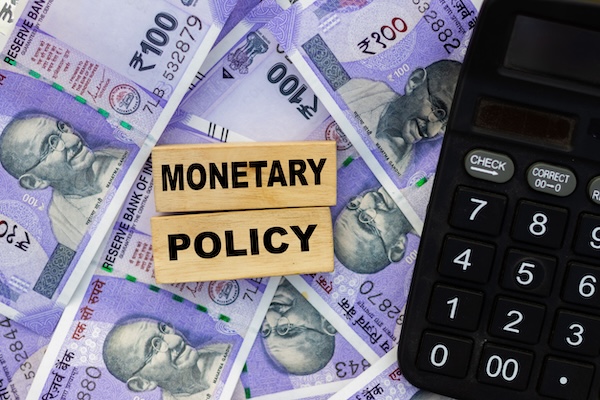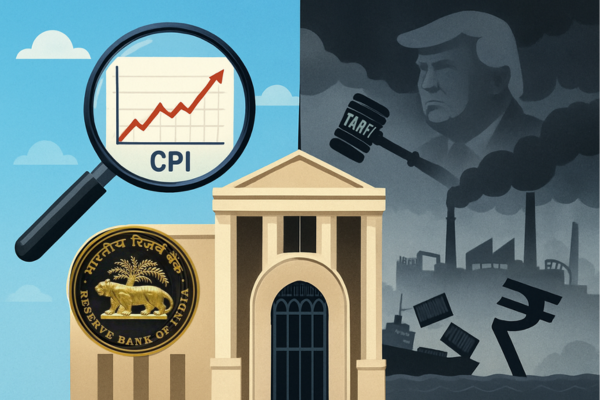.png)

Kembai Srinivasa Rao is a former banker who teaches and usually writes on Macroeconomy, Monetary policy developments, Risk Management, Corporate Governance, and the BFSI sector.
September 26, 2025 at 11:12 AM IST
Having already front-loaded a 100-basis-point repo rate cut, the focus must now shift to sustaining growth and building resilience against emerging domestic priorities and global geopolitical risks. Monetary policy has so far struck a fine balance between inflation and growth. CPI inflation remained below 4% for seven consecutive months from February to August 2025, while GDP growth of 7.8% in the April-June quarter of 2025-2026 exceeded expectations. Sustaining this momentum will require calibrated policy measures.
The RBI projects average CPI inflation to remain benign at 3.1% in 2025-2026, before edging up to 4.9% in April-June 2026-2027, partly due to base effects. Growth and inflation are currently aligned with the RBI’s projections, but risks persist from both domestic and external factors.
Systemic liquidity was in surplus between April and August, supported by the Reserve Bank of India's proactive actions, but slipped into deficit in September for the first time in 2025-2026. This was mainly due to large outflows for advance tax and Goods and Services Tax (GST) payments. In response, the RBI injected liquidity through Variable Rate Repo auctions, easing pressure on overnight money market rates and keeping them aligned with the repo rate. The central bank’s timely action addressed short-term mismatches, but structural liquidity challenges—exacerbated by slowing deposit growth—remain. The phased cut in Cash Reserve Ratio, from 4% to 3%, in four tranches between September 6 and November 29, is expected to inject around ₹2.5 trillion of liquidity into the system.
Credit, Deposit Growth
The weighted average lending rate on new rupee loans fell by 71 basis points, compared with 39 basis points for existing loans. As of December 2024, 61% of outstanding rupee loans linked to the external benchmark lending rate have been repriced in response to repo rate change.
Banks tend to quickly lower interest rates on new domestic term deposits to contain funding costs in an easing cycle. The weighted average rates on fresh term deposits fell by 87 basis points, while existing deposits saw only a 9-basis-point decline, as repricing occurs only on maturity.
Transmission lags typically arise from the pressure on cost of funds, net interest margins, the proportion of loans tied to the Marginal Cost of Funds-based Lending Rate, liquidity conditions, and risk perception. Over time, as assets and liabilities mature, transmission improves.
External Sector
As expected, the US Federal Reserve cut interest rates by 25 basis points on September 17 and signalled further easing if conditions warrant. This dovish stance allows the RBI more room for manoeuvre without widening the interest rate differential that could trigger capital outflows and weaken the rupee.
India’s foreign exchange stood at $702.3 billion as of September 12, providing a buffer against trade tensions, new US tariffs, and the one-time $100,000 fee on the new H1-B visa category. The RBI will need to evaluate the spillover of these headwinds on domestic growth.
The rupee has already depreciated 4.8% against the US dollar so far in the current financial year, underscoring the need to curb capital outflows and manage volatility. To deepen trade settlements in the Indian rupee, the RBI has asked the Clearing Corporation of India to expand infrastructure to operate additional currency pairs beyond USD/INR.
Way Forward
Having used conventional monetary policy tools to stabilise inflation and growth, the RBI must now adopt innovative measures to address evolving external risks. Priorities should include stimulating private investment in infrastructure and capacity, maintaining currency stability, encouraging bank credit flows, and bolstering consumer demand. Rate cuts may play a role, but are insufficient on their own, especially given limitations on sustaining real interest rates.
The government has already contributed by rationalising direct taxes and rolling out GST rationalisation, leading to savings of nearly ₹2.5 trillion that can boost consumption. Lower GST rates on essentials are also expected to drive multi-sectoral growth and employment.
Given the economy’s dependence on banks, credit flows must be scaled up to lift growth above 6.5-7.0%. To mobilise lendable funds, banks can issue infrastructure bonds, securitise loan pools, tap refinancing facilities, transfer stressed loans to asset reconstruction companies or the new bad bank, develop targeted bulk deposit products, and access global markets through bonds or non-resident deposits.
In an environment of abundant growth opportunities but complex geopolitical uncertainties, standard monetary policy tools may prove insufficient. Regulators may need to grant banks greater flexibility to manage risks and expand lending, including calibrated moderation of risk weights on certain priority loans. Ultimately, going beyond traditional monetary policy tools is essential to build a dynamic financial ecosystem that supports long-term growth aspirations and realises the Viksit Bharat 2047 vision.




